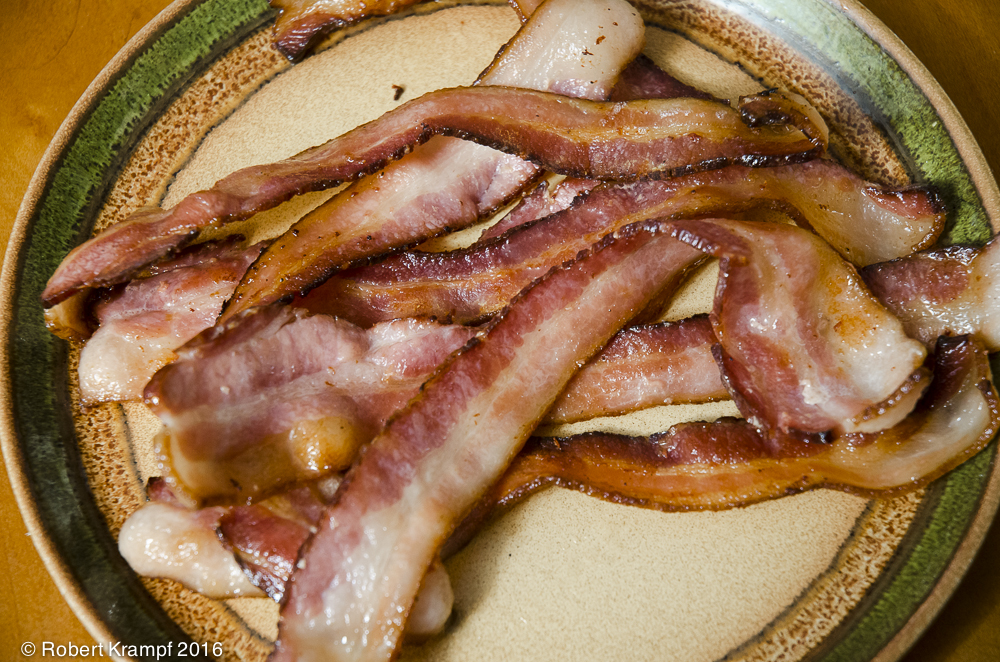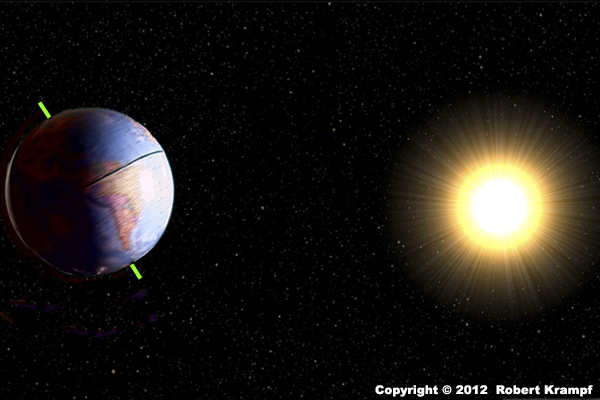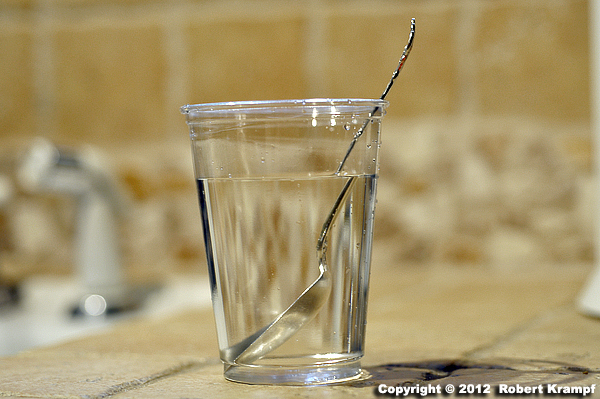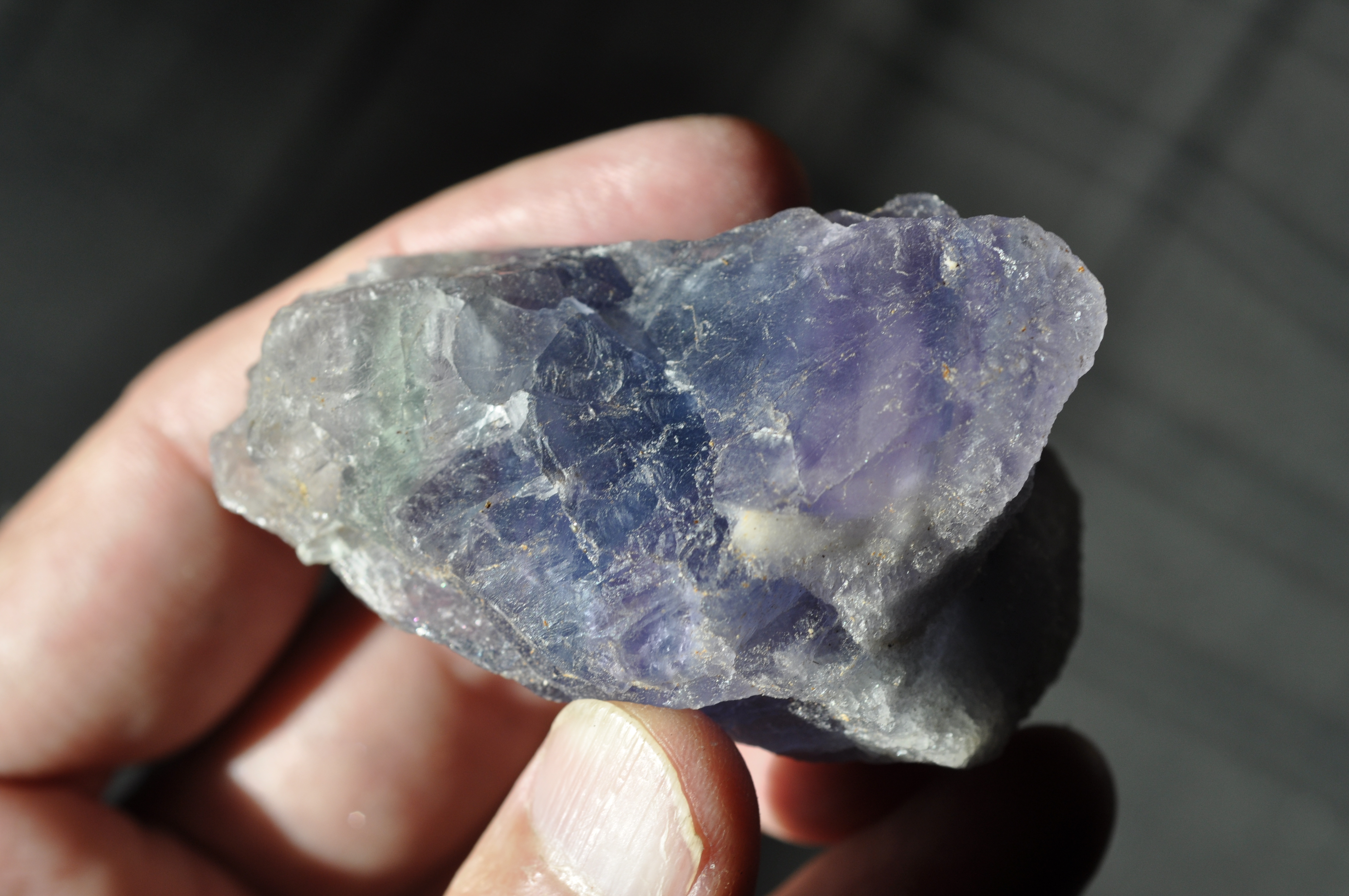Here are some science questions from the Sixth, Seventh, and Eighth Grade Standards to help you test your knowledge of the Next Generation Sunshine State Standards.
The questions are chosen randomly, so this quest will be different each time you reload the page.
* Click here to see only the most recently added questions.

Which organ produces bile to digest the fat in this bacon?
-
Liver
Yes! The liver produces bile, which digests fats. -
Gall Bladder
No. The gall bladder stores the bile, but does not produce it. -
Pancreas
No. The pancreas produces insulin to digest sugar. -
Thyroid
No. The thyroid produces several hormones which control growth and metabolism, but it does not produce bile.
Click to see which state standards this question tests, and which of my videos, experiments, and other resources support that topic.
Florida
SC.2.L.14.1 Distinguish human body parts (brain, heart, lungs, stomach, muscles, and skeleton) and their basic functions.
| Bird Bones | video, free |
| Bendable Bones | video, checked |
| Reading a Skeleton | video, free, checked |
| Review Anatomy-1 | practice |
| Review Anatomy-2 | practice |
| Review Anatomy-3 | practice |
SC.5.L.14.1 Identify the organs in the human body and describe their functions, including the skin, brain, heart, lungs, stomach, liver, intestines, pancreas, muscles and skeleton, reproductive organs, kidneys, bladder, and sensory organs.
| Bird Bones | video, free |
| Kneesy, Earsy, Nosey | video, checked |
| Bendable Bones | video, checked |
| Just a Suggestion | video |
| Reaction Time | video |
| Reading a Skeleton | video, free, checked |
| Muscles Don't Push | text page |
| Review Anatomy-1 | practice |
| Review Anatomy-2 | practice |
| Review Anatomy-3 | practice |
SC.6.L.14.5 Identify and investigate the general functions of the major systems of the human body (digestive, respiratory, circulatory, reproductive, excretory, immune, nervous, and musculoskeletal) and describe ways these systems interact with each other to maintain homeostasis.
| Bird Bones | video, free |
| Bendable Bones | video, checked |
| Reaction Time | video |
| Reading a Skeleton | video, free, checked |
| Muscles Don't Push | text page |
| Review Anatomy-1 | practice |
| Review Anatomy-2 | practice |
| Review Anatomy-3 | practice |
Utah
UT.7.III.2.c Relate the structure of an organ to its component parts and the larger system of which it is a part.
| Reaction Time | video |
| Reading a Skeleton | video, free, checked |
| Review Anatomy-1 | practice |
| Review Anatomy-2 | practice |
| Review Anatomy-3 | practice |
NGSS
MS-LS1-3 Use argument supported by evidence for how the body is a system of interacting subsystems composed of groups of cells.
| Bird Bones | video, free |
| Bendable Bones | video, checked |
| Reaction Time | video |
| Reading a Skeleton | video, free, checked |
| Review Anatomy-1 | practice |
| Review Anatomy-2 | practice |
| Review Anatomy-3 | practice |

What season is Australia having in this graphic?
-
Spring
No. In the spring, the Earth's axis would not be tilted towards or away from the Sun. -
Summer
Yes! Australia is in the southern hemisphere, which is tilted towards the Sun. That tells us that it is summer there. -
Autumn
No. In the autumn, the Earth's axis would not be tilted towards or away from the Sun. -
Winter
No. Australia is in the southern hemisphere. If it was having winter, then the southern hemisphere would be tilted away from the Sun.
Click to see which state standards this question tests, and which of my videos, experiments, and other resources support that topic.
Florida
SC.4.E.5.1 Observe that the patterns of stars in the sky stay the same although they appear to shift across the sky nightly, and different stars can be seen in different seasons.
| Global Science | video, ClosedCaptions |
| Review Space-5 | practice |
| Review Space-8 | practice |
| Review Space-12 | practice |
SC.8.E.5.9 Explain the impact of objects in space on each other including: 1. the Sun on the Earth including seasons and gravitational attraction 2. the Moon on the Earth, including phases, tides, and eclipses, and the relative position of each body.
| Global Science | video, ClosedCaptions |
| Why is a Full Moon So Bright? | text page, free, checked |
| Review Space-13 | quest |
| Review Space-12 | practice |
Utah
UT.6.II.2.e Use a model to explain why the seasons are reversed in the Northern and Southern Hemispheres.
| Global Science | video, ClosedCaptions |
| Review Space-5 | practice |
| Review Space-8 | practice |
| Review Space-12 | practice |
NGSS
5-ESS1-2 Represent data in graphical displays to reveal patterns of daily changes in length and direction of shadows, day and night, and the seasonal appearance of some stars in the night sky.
| Global Science | video, ClosedCaptions |
| Finding Your Way | video, checked |
| Review Space-5 | practice |
| Review Space-8 | practice |
| Review Space-12 | practice |
MS-ESS1-1 Develop and use a model of the Earth-sun-moon system to describe the cyclic patterns of lunar phases, eclipses of the sun and moon, and seasons.
| Global Science | video, ClosedCaptions |
| Why is a Full Moon So Bright? | text page, free, checked |
| Review Space-6 | practice |
| Review Space-7 | practice |
| Review Space-9 | practice |
| Review Space-12 | practice |

While this spoon appears to have a broken handle, it is just the result of how the water affects the light. This is an example of:
-
Refraction
Yes! Refraction bends light as it moves from one substance to another. As the light passes from the water to the air, its path is changed, making it appear that the spoon is broken. -
Reflection
No. While some light is reflected from the glass, it is not responsible for the bending of the light. -
Absorption
No. The water and glass are both clear, telling us that very little of the light is being absorbed. Absorption does not bend the light. -
Diffusion
No. Diffusion is the scattering of light as it is reflected in many different directions. Diffusion would make the image cloudy and blurry.
Click to see which state standards this question tests, and which of my videos, experiments, and other resources support that topic.
Florida
SC.3.P.10.3 Demonstrate that light travels in a straight line until it strikes an object or travels from one medium to another.
| Pinhole Eyeglasses | video, checked |
| Why Wet Things Turn Dark | video, checked |
| Growing Crystals Under the Microscope | video, free, learnalong, checked |
| Changing the Speed of Light | video |
| Why is Foam White? | video, checked |
| Microscopes: Growing Crystals | video, free, learnalong, Updated |
| Sunglass Science: Birefringence | video, free, Updated |
| Sunglass Science: Polarized Light | video, free, Updated |
| Mirage | video, free, ClosedCaptions, Updated |
| A Long Lens | text page |
| Review Light-1 | practice |
| Review Light-2 | practice |
| Review Light-3 | practice |
| Review Light-4 | practice |
| Review Light-5 | practice |
SC.3.P.10.4 Demonstrate that light can be reflected, refracted, and absorbed.
| Pinhole Eyeglasses | video, checked |
| Looking for Rainbows | video |
| Why Wet Things Turn Dark | video, checked |
| Growing Crystals Under the Microscope | video, free, learnalong, checked |
| Changing the Speed of Light | video |
| Why is Foam White? | video, checked |
| Onion Crystals | video |
| Microscopes: Growing Crystals | video, free, learnalong, Updated |
| Sunglass Science: Birefringence | video, free, Updated |
| Sunglass Science: Polarized Light | video, free, Updated |
| Mirage | video, free, ClosedCaptions, Updated |
| A Long Lens | text page |
| Sunlight, Energy, and Crayons | text page, free |
| Review Light-1 | practice |
| Review Light-2 | practice |
| Review Light-3 | practice |
| Review Light-4 | practice |
| Review Light-5 | practice |
SC.7.P.10.2 Observe and explain that light can be reflected, refracted, and/or absorbed.
| Mirage | video, free, ClosedCaptions, Updated |
| Pinhole Eyeglasses | video, checked |
| Why Wet Things Turn Dark | video, checked |
| Growing Crystals Under the Microscope | video, free, learnalong, checked |
| Finding Fat in Foods | video, ClosedCaptions, checked |
| Changing the Speed of Light | video |
| Onion Crystals | video |
| Why is Foam White? | video, checked |
| Microscopes: Growing Crystals | video, free, learnalong, Updated |
| Sunglass Science: Birefringence | video, free, Updated |
| Sunglass Science: Polarized Light | video, free, Updated |
| A Long Lens | text page |
| Sunlight, Energy, and Crayons | text page, free |
| Review Light-1 | practice |
| Review Light-2 | practice |
| Review Light-3 | practice |
| Review Light-4 | practice |
| Review Light-5 | practice |
Utah
UT.8.IV.1.b Compare the transfer of energy (i.e., sound, light, earthquake waves, heat) through various mediums.
| About Microwaves | video, checked |
| Microwave Chocolate | video, checked |
| Spoon Bells | video, checked |
| The Singing Glass | video, checked |
| Why Wet Things Turn Dark | video, checked |
| The Science of Pizza | video, checked |
| Heating a Balloon | video, ClosedCaptions, checked |
| Changing the Speed of Light | video |
| Doppler Effect | video, checked |
| Solar Power | video, checked |
| Sunglass Science: Birefringence | video, free, Updated |
| Sunglass Science: Polarized Light | video, free, Updated |
| Noisy String | video, checked |
| Mirage | video, free, ClosedCaptions, Updated |
| Comparing How Sound Moves Through Liquids and Gases | text page |
| Review Light-1 | practice |
| Review Light-2 | practice |
| Review Light-4 | practice |
| Review Light-5 | practice |
NGSS
1-PS4-3 Plan and conduct an investigation to determine the effect of placing objects made with different materials in the path of a beam of light.
| A Color You Can't See | video, free, checked |
| Pinhole Eyeglasses | video, checked |
| Why Wet Things Turn Dark | video, checked |
| Growing Crystals Under the Microscope | video, free, learnalong, checked |
| Sunprints | video |
| Changing the Speed of Light | video |
| Why is Foam White? | video, checked |
| Onion Crystals | video |
| Microscopes: Growing Crystals | video, free, learnalong, Updated |
| Sunglass Science: Birefringence | video, free, Updated |
| Sunglass Science: Polarized Light | video, free, Updated |
| Mirage | video, free, ClosedCaptions, Updated |
| A Long Lens | text page |
| Review Light-1 | practice |
| Review Light-2 | practice |
| Review Light-3 | practice |
| Review Light-4 | practice |
| Review Light-5 | practice |
MS-PS4-2 Develop and use a model to describe that waves are reflected, absorbed, or transmitted through various materials.
| About Microwaves | video, checked |
| Microwave Chocolate | video, checked |
| Why Wet Things Turn Dark | video, checked |
| Onion Crystals | video |
| Sunprints | video |
| Finding Fat in Foods | video, ClosedCaptions, checked |
| Changing the Speed of Light | video |
| Why is Foam White? | video, checked |
| Sunglass Science: Birefringence | video, free, Updated |
| Sunglass Science: Polarized Light | video, free, Updated |
| Mirage | video, free, ClosedCaptions, Updated |
| A Long Lens | text page |
| Sunlight, Energy, and Crayons | text page, free |
| Review Light-1 | practice |
| Review Light-2 | practice |
| Review Light-4 | practice |
| Review Light-5 | practice |

This is called Fluorite. It is used in making many important chemicals. What kind of rock is it?.
-
Igneous
No. Igneous rocks formed from magma or lava. Fluorite is sometimes found as a mineral in igneous rock, but it is not an igneous rock. -
Sedimentary
No. Sedimentary rocks are deposited by wind, water, ice, or gravity, and they often contain fossils. Fluorite is not a sedimentary rock. -
Metamorphic
No. Metamorphic rocks have been changed by heat and pressure from a different kind of rock. Fluorite is not metamorphic. -
Fluorite is not a rock.
Yes! Fluorite is a mineral, not a rock. It is not found in large layers in the Earth.
Click to see which state standards this question tests, and which of my videos, experiments, and other resources support that topic.
Florida
SC.4.E.6.1 Identify the three categories of rocks: igneous, (formed from molten rock); sedimentary (pieces of other rocks and fossilized organisms); and metamorphic (formed from heat and pressure).
| Evaporites | video, learnalong, checked |
| Igneous Rocks and Bubbles | video, free, learnalong, Updated |
| Sedimentary Rocks | video, learnalong |
| What is a Rock? | video, learnalong, checked |
| Bioclastics: Rocks With No Minerals | video |
| Foliated and Unfoliated Rocks | text page, learnalong |
| Identifying Igneous Rocks | text page, learnalong |
| Intrusive and Extrusive Igneous Rocks | text page, learnalong |
| Light and Dark Minerals | text page, learnalong |
| Homemade Fossil Dig | text page |
| Review Rocks-2 | practice |
| Review Rocks-3 | practice |
| Review Rocks-4 | practice |
| Review Rocks-5 | practice |
| Review Rocks-6 | practice |
| Review Rocks-8 | practice |
| Review Rocks-9 | practice |
| Review Rocks-7 | practice |
| Review Rocks-10 | practice |
| Review Rocks-10 | practice |
| Review Rocks-10 | practice |
| Review Rocks-1 | practice |
SC.7.E.6.2 Identify the patterns within the rock cycle and relate them to surface events (weathering and erosion) and sub-surface events (plate tectonics and mountain building).
| Bioclastics: Rocks With No Minerals | video |
| Weathering and Erosion | video, learnalong, checked |
| Evaporites | video, learnalong, checked |
| What is a Rock? | video, learnalong, checked |
| The Rock Cycle | video, learnalong |
| Change: Fast and Slow | video |
| Erosion | video, checked |
| Continuous Change | video, checked |
| Review Erosion-2 | practice |
| Review Erosion-3 | practice |
| Review Erosion-4 | practice |
| Review Erosion-5 | practice |
| Review Rocks-4 | practice |
| Review Rocks-5 | practice |
| Review Rocks-6 | practice |
| Review Rocks-8 | practice |
| Review Rocks-9 | practice |
| Review Rocks-7 | practice |
| Review Rocks-10 | practice |
| Review Rocks-10 | practice |
| Review Rocks-1 | practice |
| Review Erosion-1 | practice |
Utah
UT.4.III.1.a Describe the differences between minerals and rocks.
| Definition of a Mineral | video, checked |
| What is a Mineral? | video, checked |
| Identifying Minerals | video, learnalong |
| What is a Rock? | video, learnalong, checked |
| Bioclastics: Rocks With No Minerals | video |
| Review Rocks-10 | practice |
| Review Rocks-1 | practice |
| Review Rocks-4 | practice |
| Review Rocks-5 | practice |
| Review Rocks-6 | practice |
| Review Rocks-8 | practice |
| Review Rocks-9 | practice |
| Review Rocks-7 | practice |
NGSS
4-ESS1-1 Identify evidence from patterns in rock formations and fossils in rock layers to support an explanation for changes in a landscape over time.
| Reading the Rocks: The Present is the Key to the Past | video, ClosedCaptions |
| Paleo Cookies | video |
| Evaporites | video, learnalong, checked |
| Igneous Rocks and Bubbles | video, free, learnalong, Updated |
| Sedimentary Rocks | video, learnalong |
| Reading the Rocks: Law of Superposition | video |
| Reading the Rocks: Law of Crosscutting | video |
| What is a Rock? | video, learnalong, checked |
| Homemade Fossil Dig | text page |
| Review Rocks-1 | practice |
| Review Geologic Time-1 | practice |
| Review Rocks-4 | practice |
| Review Geologic Time-2 | practice |
| Review Rocks-5 | practice |
| Review Rocks-6 | practice |
| Review Rocks-8 | practice |
| Review Rocks-9 | practice |
| Review Rocks-7 | practice |
| Review Rocks-10 | practice |
| Review Geologic Time-3 | practice |
MS-ESS2-1 Develop a model to describe the cycling of Earth’s materials and the flow of energy that drives this process.
| The Rock Cycle | video, learnalong |
| Bioclastics: Rocks With No Minerals | video |
| Evaporites | video, learnalong, checked |
| Definition of a Mineral | video, checked |
| Igneous Rocks and Bubbles | video, free, learnalong, Updated |
| What is a Mineral? | video, checked |
| Identifying Minerals | video, learnalong |
| Sedimentary Rocks | video, learnalong |
| What is a Rock? | video, learnalong, checked |
| Light and Dark Minerals | text page, learnalong |
| Review Rocks-1 | practice |
| Review Rocks-2 | practice |
| Review Rocks-3 | practice |
| Review Rocks-4 | practice |
| Review Rocks-5 | practice |
| Review Rocks-6 | practice |
| Review Rocks-8 | practice |
| Review Rocks-9 | practice |
| Review Rocks-7 | practice |
| Review Rocks-10 | practice |
| Review Rocks-10 | practice |
| Review Rocks-10 | practice |

I let mold grow on this stale loaf of bread. What part of the food web does the mold belong to?
-
Producer.
No. A producer captures energy from sunlight, and stores it as food. To do that, the organism needs to contain chlorophyll. This mold is green, but does not have chlorophyll. -
Primary Consumer.
No. Primary consumers eat producers. This mold does not eat living plants. -
Secondary Consumer
No. Secondary consumers eat other consumers. This mold does not eat animals. -
Decomposer
Yes! Decomposers break down dead and decaying organisms. The mold is a fungus that is breaking down and decomposing the bread to get energy from it..
Click to see which state standards this question tests, and which of my videos, experiments, and other resources support that topic.
Florida
SC.4.L.17.3 Trace the flow of energy from the Sun as it is transferred along the food chain through the producers to the consumers.
| Primary Consumers | video, ClosedCaptions, Updated, checked |
| Scavengers and Decomposers | video, free, ClosedCaptions, Updated |
| Secondary Consumers | video, free, ClosedCaptions, Updated, checked |
| Producers | video, free, Updated, checked |
| What is a Food Web? | text page, free, checked |
| Food Web Tag | text page |
| Review Food Web-1 | practice |
| Review Food Web-3 | practice |
| Review Food Web-4 | practice |
| Review Food Web-5 | practice |
| Review Food Web-6 | practice |
| Review Food Web-7 | practice |
| Review Food Web-8 | practice |
| Review Food Web-9 | practice |
| Review Food Web-10 | practice |
| Review Food Web-2 | practice |
SC.7.L.17.1 Explain and illustrate the roles of and relationships among producers, consumers, and decomposers in the process of energy transfer in a food web.
| Primary Consumers | video, ClosedCaptions, Updated, checked |
| Measuring Calories | video, ClosedCaptions, checked |
| Scavengers and Decomposers | video, free, ClosedCaptions, Updated |
| Secondary Consumers | video, free, ClosedCaptions, Updated, checked |
| Producers | video, free, Updated, checked |
| What is a Food Web? | text page, free, checked |
| Food Web Tag | text page |
| Review Food Web-1 | practice |
| Review Food Web-3 | practice |
| Review Food Web-4 | practice |
| Review Food Web-5 | practice |
| Review Food Web-6 | practice |
| Review Food Web-7 | practice |
| Review Food Web-8 | practice |
| Review Food Web-9 | practice |
| Review Food Web-10 | practice |
| Review Food Web-2 | practice |
Utah
UT.8.II.2.a Categorize the relationships between organisms (i.e., producer/consumer/decomposer, predator/prey, mutualism/parasitism) and provide examples of each.
| Secondary Consumers | video, free, ClosedCaptions, Updated, checked |
| Producers | video, free, Updated, checked |
| Primary Consumers | video, ClosedCaptions, Updated, checked |
| What is a Food Web? | text page, free, checked |
| Review Food Web-1 | practice |
| Review Food Web-3 | practice |
| Review Food Web-4 | practice |
| Review Food Web-5 | practice |
| Review Food Web-6 | practice |
| Review Food Web-7 | practice |
| Review Food Web-8 | practice |
| Review Food Web-9 | practice |
| Review Food Web-10 | practice |
| Review Food Web-11 | practice |
| Review Food Web-12 | practice |
| Review Food Web-2 | practice |
NGSS
5-PS3-1 Use models to describe that energy in animals’ food (used for body repair, growth, motion, and to maintain body warmth) was once energy from the sun.
| Primary Consumers | video, ClosedCaptions, Updated, checked |
| Measuring Calories | video, ClosedCaptions, checked |
| Scavengers and Decomposers | video, free, ClosedCaptions, Updated |
| Secondary Consumers | video, free, ClosedCaptions, Updated, checked |
| Producers | video, free, Updated, checked |
| Measuring Photosynthesis | video, checked |
| Calories: Measuring the Energy | text page, free |
| What is a Food Web? | text page, free, checked |
| Review Food Web-2 | practice |
| Review Food Web-1 | practice |
| Review Food Web-3 | practice |
| Review Food Web-4 | practice |
| Review Food Web-5 | practice |
| Review Food Web-6 | practice |
| Review Food Web-7 | practice |
| Review Food Web-8 | practice |
| Review Food Web-9 | practice |
| Review Food Web-10 | practice |
5-LS2-1 Develop a model to describe the movement of matter among plants, animals, decomposers, and the environment.
| Scavengers and Decomposers | video, free, ClosedCaptions, Updated |
| Secondary Consumers | video, free, ClosedCaptions, Updated, checked |
| Producers | video, free, Updated, checked |
| Primary Consumers | video, ClosedCaptions, Updated, checked |
| What is a Food Web? | text page, free, checked |
| Review Food Web-1 | practice |
| Review Food Web-3 | practice |
| Review Food Web-4 | practice |
| Review Food Web-5 | practice |
| Review Food Web-6 | practice |
| Review Food Web-7 | practice |
| Review Food Web-8 | practice |
| Review Food Web-9 | practice |
| Review Food Web-10 | practice |
| Review Food Web-2 | practice |
